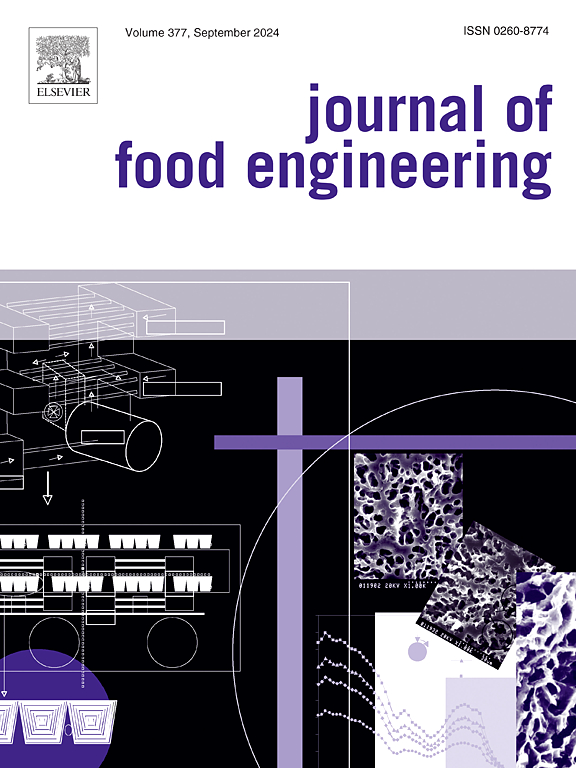Bread contamination detection using deep learning and thermal imaging
IF 5.8
2区 农林科学
Q1 ENGINEERING, CHEMICAL
引用次数: 0
Abstract
The effectiveness of four You Only Look Once (YOLO) models (YOLOv5, YOLOv8, YOLOv9, and YOLOv11) was evaluated for detecting contamination (water, oil, grease, and cleaning chemicals) in bread using thermal imaging. Thermal images of contaminated and uncontaminated bread slices were collected through active thermography, employing a controlled hot air supply under varying conditions. The analysis revealed distinct thermal signs, with oil-contaminated areas exhibiting higher temperatures, and water, grease, and chemical contaminants appearing cooler. The trained YOLO models were assessed based on the mean average precision (mAP50-95), inference speed, and computational efficiency. The results indicate that increased model complexity does not always translate into higher accuracy. The lightweight YOLOv11n model (2.59 M parameters, 6.4 Giga Floating Point Operations Per Second (GFLOPs) achieved a competitive mAP50-95 score of 0.607, closely matching larger models such as YOLOv8s (28.6 GFLOPs, mAP50-95: 0.601) and YOLOv9s (27.4 GFLOPs, mAP50-95: 0.601). Despite deeper architectures, models such as YOLOv9s exhibit signs of overfitting without significant performance improvements. YOLOv11n outperformed the other models in terms of operational efficiency, achieving faster inference speeds (3.0 ms/image) and lower memory consumption, thus making it suitable for real-time industrial applications. The training durations for all models were low, ranging between 0.107 and 0.146 h for 10 epochs on an NVIDIA Tesla T4 GPU, demonstrating that contamination detection is a computationally manageable task. These findings suggest that lightweight models, such as YOLOv11n, provide an optimal balance between accuracy, computational efficiency, and practical deployment feasibility.

利用深度学习和热成像技术检测面包污染
使用热成像技术评估了四种You Only Look Once (YOLO)模型(YOLOv5、YOLOv8、YOLOv9和YOLOv11)检测面包中的污染物(水、油、油脂和清洁化学品)的有效性。通过主动热成像,在不同条件下采用受控热空气供应,收集了污染和未污染面包片的热图像。分析显示出明显的热信号,油污染区域温度较高,而水、油脂和化学污染物温度较低。根据平均精度(mAP50-95)、推理速度和计算效率对训练好的YOLO模型进行评估。结果表明,增加的模型复杂性并不总是转化为更高的精度。轻量级的YOLOv11n模型(2.59 M参数,6.4千兆浮点运算/秒(GFLOPs))获得了0.607的具有竞争力的mAP50-95分数,与YOLOv8s (28.6 GFLOPs, mAP50-95: 0.601)和YOLOv9s (27.4 GFLOPs, mAP50-95: 0.601)等大型模型非常接近。尽管有更深层次的架构,但像YOLOv9s这样的模型表现出过拟合的迹象,而没有显著的性能改进。YOLOv11n在运行效率方面优于其他型号,实现了更快的推理速度(3.0 ms/image)和更低的内存消耗,因此适合实时工业应用。所有模型的训练时间都很低,在NVIDIA Tesla T4 GPU上的10个epoch的训练时间范围在0.107到0.146小时之间,这表明污染检测是一项计算可管理的任务。这些发现表明,轻量级模型,如YOLOv11n,在准确性、计算效率和实际部署可行性之间提供了最佳平衡。
本文章由计算机程序翻译,如有差异,请以英文原文为准。
求助全文
约1分钟内获得全文
求助全文
来源期刊

Journal of Food Engineering
工程技术-工程:化工
CiteScore
11.80
自引率
5.50%
发文量
275
审稿时长
24 days
期刊介绍:
The journal publishes original research and review papers on any subject at the interface between food and engineering, particularly those of relevance to industry, including:
Engineering properties of foods, food physics and physical chemistry; processing, measurement, control, packaging, storage and distribution; engineering aspects of the design and production of novel foods and of food service and catering; design and operation of food processes, plant and equipment; economics of food engineering, including the economics of alternative processes.
Accounts of food engineering achievements are of particular value.
 求助内容:
求助内容: 应助结果提醒方式:
应助结果提醒方式:


